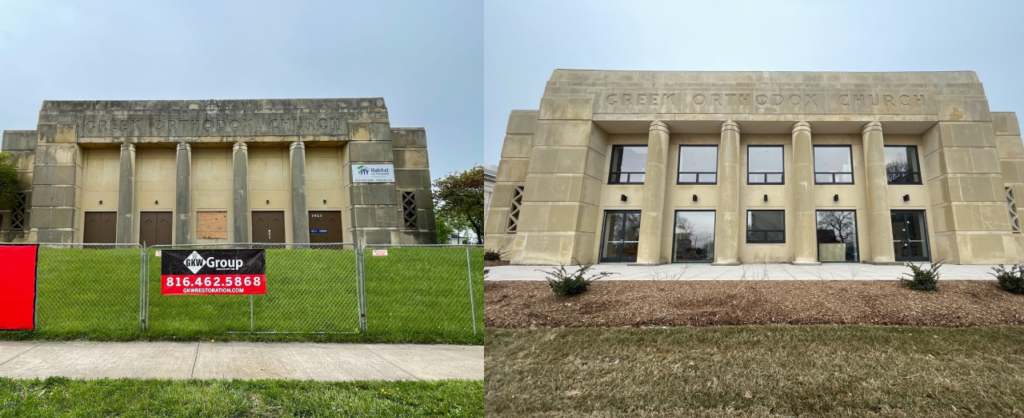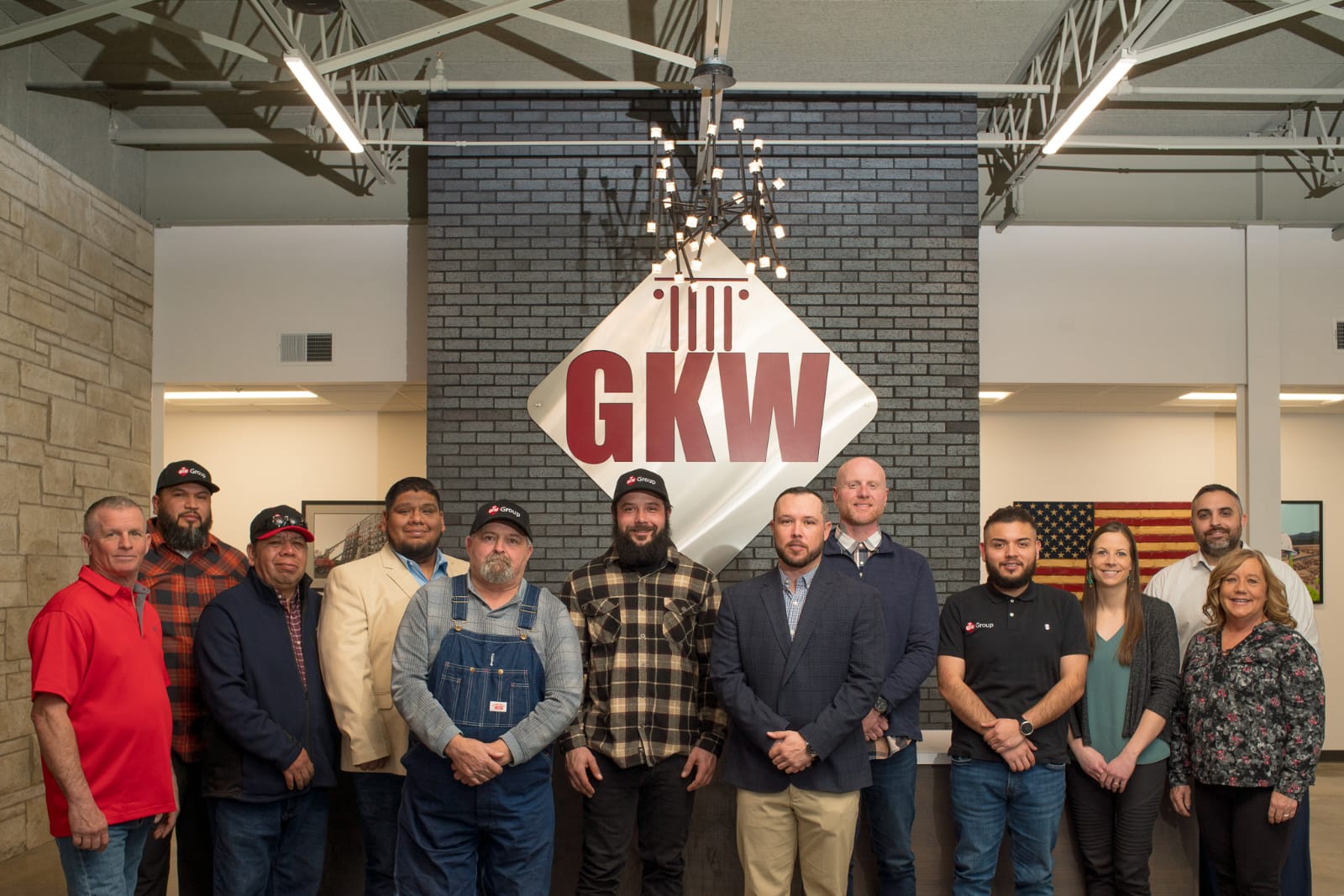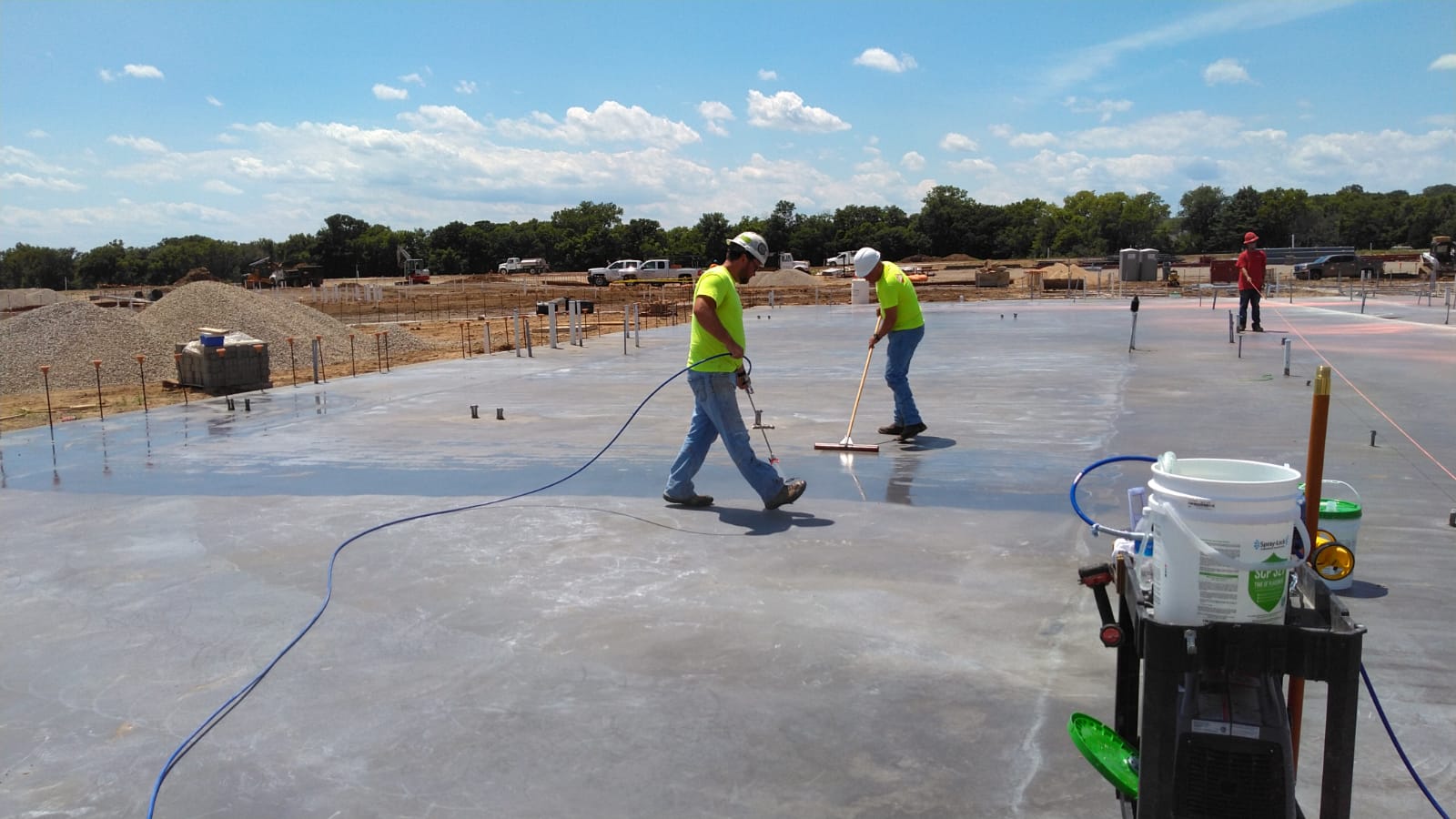GKW Restoration2 days ago
Matching Brick is a Science
Matching brick is not about appearance. It is about performance.
Get it wrong, and the wall fails. Get it right, and the repair disappears—not just visually but functionally.
Most people think matching brick means matching color. But color is surface. Color is simple. What matters is what is beneath the surface.
Here is why most failed repairs begin with the wrong brick:
Firing temperature is off. The brick ends up too hard or too soft. Get it wrong and you either trap moisture or absorb too much of it. Either way, the failure is built in.
Clay body composition is wrong. The minerals determine how the brick ages. If the chemistry is different, it does not weather the same. The wall starts to look wrong and act wrong.
Absorption rate is incompatible. The wall is a moisture management system. Too porous and it saturates. Too dense and the moisture cannot escape. Either path leads to spalls, staining, and premature failure.
A mismatched brick does not just look bad.
It moves differently. It weathers differently.
It forces the wall out of balance.
At GKW Restoration, we do not think in colors. We think in chemistry. We think in physics. We think in durability.
This is why our work lasts. This is why our repairs disappear—not just today but for the next 50 years.
The buildings we restore were built to last. Our job is to make sure they still do.
#brickrestoration #matchingbrick #restorationarchitecture #historicpreservation #facaderestoration #brickmasonry #masonryrepair #buildingscience #materialperformance #buildingdurability #brickmatching #brickrepair #brickconstruction #architectureinpractice #preservationmatters #architecturalrestoration #conservationengineering #buildingconservation #moisturemanagement #wallperformance #masonrywork #materialscience #buildingpathology #brickdetails #brickcraft #fieldnotes #restorationproject #technicalrestoration #moisturecontrol #envelopescience #compatiblematerials #weatheringperformance #buildingmaterials #performanceoverappearance #durabledesign #sustainablebuilding #constructionwisdom #forensicarchitecture #restoringhistory #brickscience #wallassembly #structurestudy #absorptionrate #engineeringdesign #masonryinspection #restorationstandards #matchnotmask #brickperformance #chemistryofmaterials #architecturalcraft #bricktesting #sustainablepreservation #longlastingsolutions #materialintegrity #brickfacade #expertcraftsmanship #facadeinvestigation
Matching brick is not about appearance. It is about performance.
Get it wrong, and the wall fails. Get it right, and the repair disappears—not just visually but functionally.
Most people think matching brick means matching color. But color is surface. Color is simple. What matters is what is beneath the surface.
Here is why most failed repairs begin with the wrong brick:
Firing temperature is off. The brick ends up too hard or too soft. Get it wrong and you either trap moisture or absorb too much of it. Either way, the failure is built in.
Clay body composition is wrong. The minerals determine how the brick ages. If the chemistry is different, it does not weather the same. The wall starts to look wrong and act wrong.
Absorption rate is incompatible. The wall is a moisture management system. Too porous and it saturates. Too dense and the moisture cannot escape. Either path leads to spalls, staining, and premature failure.
A mismatched brick does not just look bad.
It moves differently. It weathers differently.
It forces the wall out of balance.
At GKW Restoration, we do not think in colors. We think in chemistry. We think in physics. We think in durability.
This is why our work lasts. This is why our repairs disappear—not just today but for the next 50 years.
The buildings we restore were built to last. Our job is to make sure they still do.
#brickrestoration #matchingbrick #restorationarchitecture #historicpreservation #facaderestoration #brickmasonry #masonryrepair #buildingscience #materialperformance #buildingdurability #brickmatching #brickrepair #brickconstruction #architectureinpractice #preservationmatters #architecturalrestoration #conservationengineering #buildingconservation #moisturemanagement #wallperformance #masonrywork #materialscience #buildingpathology #brickdetails #brickcraft #fieldnotes #restorationproject #technicalrestoration #moisturecontrol #envelopescience #compatiblematerials #weatheringperformance #buildingmaterials #performanceoverappearance #durabledesign #sustainablebuilding #constructionwisdom #forensicarchitecture #restoringhistory #brickscience #wallassembly #structurestudy #absorptionrate #engineeringdesign #masonryinspection #restorationstandards #matchnotmask #brickperformance #chemistryofmaterials #architecturalcraft #bricktesting #sustainablepreservation #longlastingsolutions #materialintegrity #brickfacade #expertcraftsmanship #facadeinvestigation
GKW Restoration4 days ago
Why Bricks Fail
Bricks do not fail randomly. They fail for a reason.
When we show up to a building, the cracks are not just damage. They are messages. The facade is speaking. Our job is to listen.
Here is what the building is telling us:
Moisture got where it should not. Modern coatings, poor repairs, clogged weeps—when water gets trapped behind the face, freeze-thaw cycles do the rest. Spalls. Cracks. Erosion.
Hard mortars were forced onto soft bricks. Instead of the joint flexing, the brick absorbs the stress. Corners pop. Faces shear. The wrong mortar breaks the wrong part of the wall.
The wall was forced to fight itself. These buildings were not designed for modern thermal conditions. No movement joints. No tolerance for expansion. When the wall grows in the heat, it has nowhere to go—so it cracks itself open.
None of this is accidental.
Every failure is a diagram of forces—moisture, thermal, structural.
At GKW Restoration, our job starts before a single tool is lifted. We do not guess. We diagnose.
• Where is the moisture coming from?
• Where is the stress concentrating?
• What materials are no longer working together as a system?
We do not just repair cracks. We solve the problem that made them.
This is the work. This is why owners, architects, and engineers trust GKW. Because we do not fix symptoms. We fix buildings.
#brickrestoration #masonryrestoration #historicpreservation #facaderestoration #buildingscience #materialscience #structuralintegrity #conservationengineering #buildingconservation #terra cotta #brickdurability #restoringhistory #preservationpractice #facadeengineering #technicalrestoration #craftandconstruction #structuralsolutions #heritageconservation #preservationmatters #brickrepair #engineeringdesign #constructiondetailing #buildingpathology #architecturalrestoration #legacyprojects #adaptiveuse #facadeassessment #forensicarchitecture #restorationarchitecture #materialperformance #craftsmanshipmatters #historicfacades #buildingenvelope #preservationdesign #urbanskin #designthinking #brickandmortar #technicalarchitecture #preservingthepast #repairandpreserve #engineeringexcellence #materialbehavior #brickscience #facadeconsulting #skyscraperrestoration #constructionengineering #facadeinvestigation #futureofpreservation #buildingpreservation #landmarkrestoration #skyscraperheritage #restoringcraft #masonryscience #facadecraft #longlastingdesign #timelessmaterials #scienceofrestoration #materialforensics #facadeexperts #durablematerials #performancearchitecture #gkwrestoration
Bricks do not fail randomly. They fail for a reason.
When we show up to a building, the cracks are not just damage. They are messages. The facade is speaking. Our job is to listen.
Here is what the building is telling us:
Moisture got where it should not. Modern coatings, poor repairs, clogged weeps—when water gets trapped behind the face, freeze-thaw cycles do the rest. Spalls. Cracks. Erosion.
Hard mortars were forced onto soft bricks. Instead of the joint flexing, the brick absorbs the stress. Corners pop. Faces shear. The wrong mortar breaks the wrong part of the wall.
The wall was forced to fight itself. These buildings were not designed for modern thermal conditions. No movement joints. No tolerance for expansion. When the wall grows in the heat, it has nowhere to go—so it cracks itself open.
None of this is accidental.
Every failure is a diagram of forces—moisture, thermal, structural.
At GKW Restoration, our job starts before a single tool is lifted. We do not guess. We diagnose.
• Where is the moisture coming from?
• Where is the stress concentrating?
• What materials are no longer working together as a system?
We do not just repair cracks. We solve the problem that made them.
This is the work. This is why owners, architects, and engineers trust GKW. Because we do not fix symptoms. We fix buildings.
#brickrestoration #masonryrestoration #historicpreservation #facaderestoration #buildingscience #materialscience #structuralintegrity #conservationengineering #buildingconservation #terra cotta #brickdurability #restoringhistory #preservationpractice #facadeengineering #technicalrestoration #craftandconstruction #structuralsolutions #heritageconservation #preservationmatters #brickrepair #engineeringdesign #constructiondetailing #buildingpathology #architecturalrestoration #legacyprojects #adaptiveuse #facadeassessment #forensicarchitecture #restorationarchitecture #materialperformance #craftsmanshipmatters #historicfacades #buildingenvelope #preservationdesign #urbanskin #designthinking #brickandmortar #technicalarchitecture #preservingthepast #repairandpreserve #engineeringexcellence #materialbehavior #brickscience #facadeconsulting #skyscraperrestoration #constructionengineering #facadeinvestigation #futureofpreservation #buildingpreservation #landmarkrestoration #skyscraperheritage #restoringcraft #masonryscience #facadecraft #longlastingdesign #timelessmaterials #scienceofrestoration #materialforensics #facadeexperts #durablematerials #performancearchitecture #gkwrestoration
GKW Restoration5 days ago
The Science of Brick Durability
Brick seems simple. It is anything but.
Walk down any historic street and you will see it. Beautiful rows of brick, standing for over a century. But what makes that possible is not magic. It is material science.
The durability of brick starts long before it is ever laid into a wall. It begins in the clay. In the firing process. In the molecular structure baked into every unit.
Here is what controls whether brick stands for 100 years—or fails in 10:
Silica, alumina, and flux. These are not just ingredients. They govern how the clay body vitrifies. The right balance creates strength. The wrong balance creates weakness.
Porosity. This is the sponge factor. Too porous and the brick drinks in moisture, leading to freeze-thaw damage. Too dense and the wall cannot breathe, trapping moisture inside.
Thermal expansion. Every material expands and contracts. If the brick expands at a different rate than the mortar or backup, the wall starts to fight itself. Cracks form. Units spall.
This is why so many restorations fail. They focus on what the eye can see—color, texture, size—but ignore what the wall actually needs to perform.
At GKW Restoration, matching color is only the beginning. We match performance. We match behavior. We match the science embedded in the original material.
Restoration is not paint and patch. It is physics. It is chemistry. It is the science of longevity.
This is the difference between cosmetic repair and true restoration. And this is the standard GKW brings to every project.
#brickrestoration #masonryrestoration #historicpreservation #facaderestoration #buildingscience #materialscience #structuralintegrity #conservationengineering #buildingconservation #terra cotta #brickdurability #restoringhistory #preservationpractice #facadeengineering #technicalrestoration #craftandconstruction #structuralsolutions #heritageconservation #preservationmatters #brickrepair #engineeringdesign #constructiondetailing #buildingpathology #architecturalrestoration #legacyprojects #adaptiveuse #facadeassessment #forensicarchitecture #restorationarchitecture #materialperformance #craftsmanshipmatters #historicfacades #buildingenvelope #preservationdesign #urbanskin #designthinking #brickandmortar #technicalarchitecture #preservingthepast #repairandpreserve #engineeringexcellence #materialbehavior #brickscience #facadeconsulting #skyscraperrestoration #constructionengineering #facadeinvestigation #futureofpreservation #buildingpreservation #landmarkrestoration #skyscraperheritage #restoringcraft #masonryscience #facadecraft #longlastingdesign #timelessmaterials #scienceofrestoration #materialforensics #facadeexperts #durablematerials #performancearchitecture #gkwrestoration
Brick seems simple. It is anything but.
Walk down any historic street and you will see it. Beautiful rows of brick, standing for over a century. But what makes that possible is not magic. It is material science.
The durability of brick starts long before it is ever laid into a wall. It begins in the clay. In the firing process. In the molecular structure baked into every unit.
Here is what controls whether brick stands for 100 years—or fails in 10:
Silica, alumina, and flux. These are not just ingredients. They govern how the clay body vitrifies. The right balance creates strength. The wrong balance creates weakness.
Porosity. This is the sponge factor. Too porous and the brick drinks in moisture, leading to freeze-thaw damage. Too dense and the wall cannot breathe, trapping moisture inside.
Thermal expansion. Every material expands and contracts. If the brick expands at a different rate than the mortar or backup, the wall starts to fight itself. Cracks form. Units spall.
This is why so many restorations fail. They focus on what the eye can see—color, texture, size—but ignore what the wall actually needs to perform.
At GKW Restoration, matching color is only the beginning. We match performance. We match behavior. We match the science embedded in the original material.
Restoration is not paint and patch. It is physics. It is chemistry. It is the science of longevity.
This is the difference between cosmetic repair and true restoration. And this is the standard GKW brings to every project.
#brickrestoration #masonryrestoration #historicpreservation #facaderestoration #buildingscience #materialscience #structuralintegrity #conservationengineering #buildingconservation #terra cotta #brickdurability #restoringhistory #preservationpractice #facadeengineering #technicalrestoration #craftandconstruction #structuralsolutions #heritageconservation #preservationmatters #brickrepair #engineeringdesign #constructiondetailing #buildingpathology #architecturalrestoration #legacyprojects #adaptiveuse #facadeassessment #forensicarchitecture #restorationarchitecture #materialperformance #craftsmanshipmatters #historicfacades #buildingenvelope #preservationdesign #urbanskin #designthinking #brickandmortar #technicalarchitecture #preservingthepast #repairandpreserve #engineeringexcellence #materialbehavior #brickscience #facadeconsulting #skyscraperrestoration #constructionengineering #facadeinvestigation #futureofpreservation #buildingpreservation #landmarkrestoration #skyscraperheritage #restoringcraft #masonryscience #facadecraft #longlastingdesign #timelessmaterials #scienceofrestoration #materialforensics #facadeexperts #durablematerials #performancearchitecture #gkwrestoration
Recent Project - Habitat for Humanity, 1423 Linwood Blvd, Kansas City, MO 64109

We specialize in
LET'S WORK TOGETHER
Our team is highly skilled and has years of experience. We bring value to every interaction, and our customers enjoy working with us to come up with creative solutions to the complex challenges that arise during historic restoration work.
Our Valued Clients








